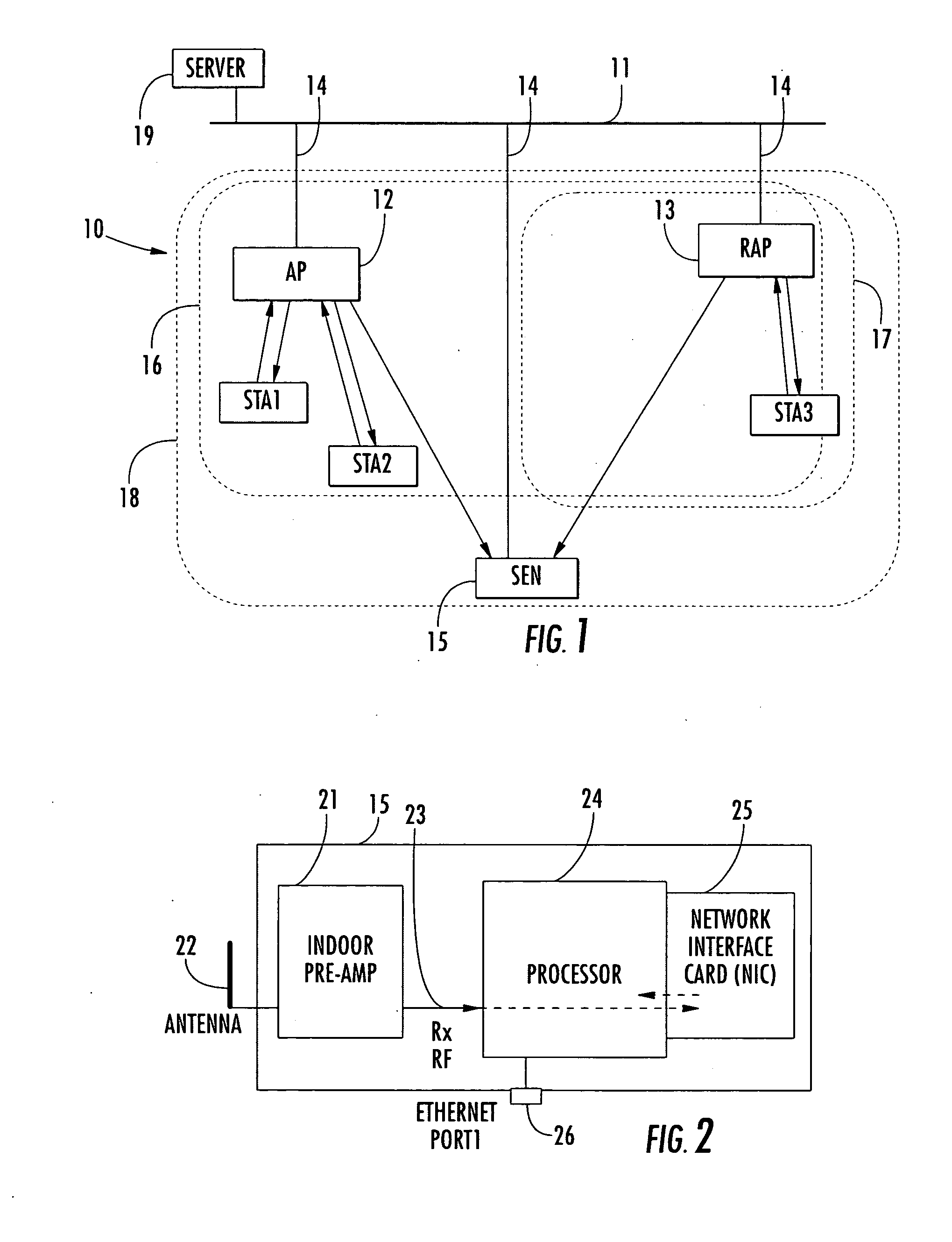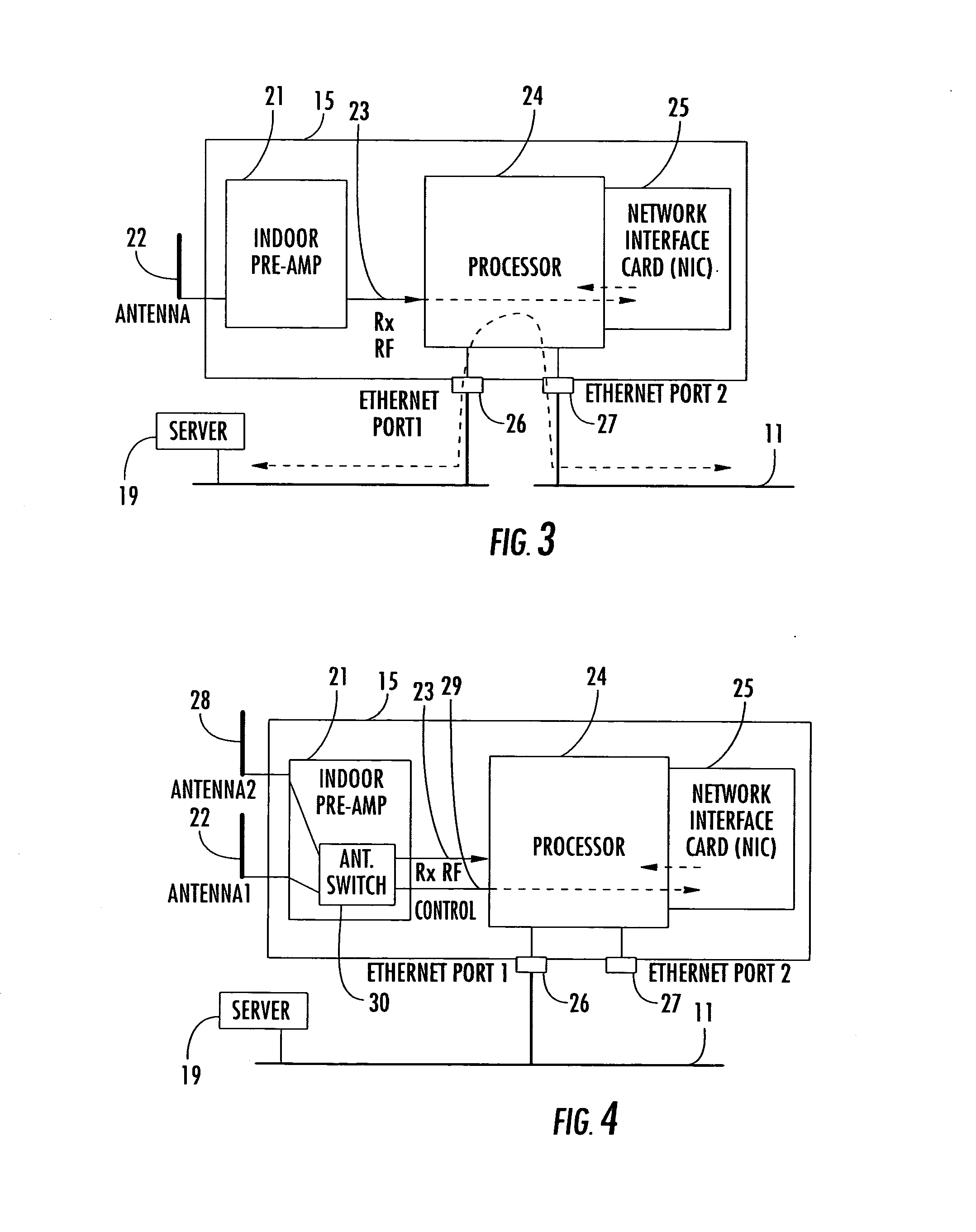Device and method for detecting unauthorized, "rogue" wireless LAN access points
a wireless lan and access point technology, applied in the field of local area networks (lans), can solve problems such as security risks, installation of such devices, and installation of unauthorized or “rogue” access points, and achieve the effect of improving the receiver range and geolocation capability of the system
- Summary
- Abstract
- Description
- Claims
- Application Information
AI Technical Summary
Benefits of technology
Problems solved by technology
Method used
Image
Examples
Embodiment Construction
[0028] The present invention will now be described more fully hereinafter with reference to the accompanying drawings, in which preferred embodiments of the invention are shown. This invention may, however, be embodied in many different forms and should not be construed as limited to the embodiments set forth herein. Rather, these embodiments are provided so that this disclosure will be thorough and complete, and will fully convey the scope of the invention to those skilled in the art. Like numbers refer to like elements throughout, and prime notation is used to indicate similar elements in alternative embodiments.
[0029]FIG. 1 illustrates a wireless local area network (WLAN), generally indicated at 10. Examples of such networks include IEEE 802.11b, 802.11a, and 802.11g networks that provide WLAN networking. In this illustrated example, one authorized access point 12 provides a defined wireless coverage area 16 and provides wireless user client stations STA1 and STA2 access to a wi...
PUM
 Login to View More
Login to View More Abstract
Description
Claims
Application Information
 Login to View More
Login to View More - R&D
- Intellectual Property
- Life Sciences
- Materials
- Tech Scout
- Unparalleled Data Quality
- Higher Quality Content
- 60% Fewer Hallucinations
Browse by: Latest US Patents, China's latest patents, Technical Efficacy Thesaurus, Application Domain, Technology Topic, Popular Technical Reports.
© 2025 PatSnap. All rights reserved.Legal|Privacy policy|Modern Slavery Act Transparency Statement|Sitemap|About US| Contact US: help@patsnap.com



